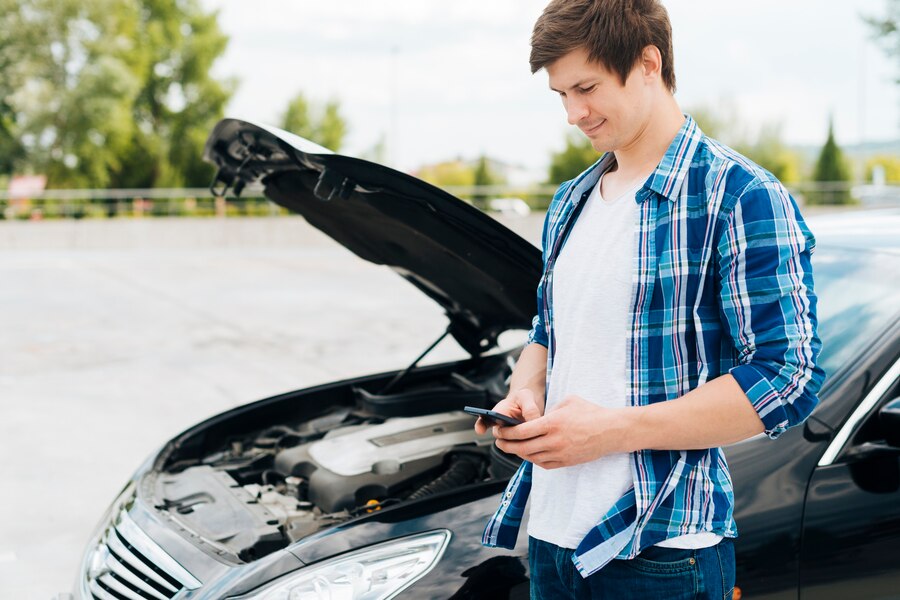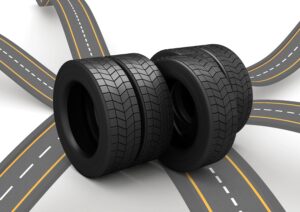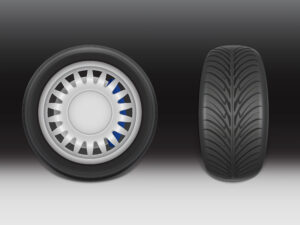How to Start Car if Battery is Down: A Complete Guide

Knowing how to start a car if the battery is down can save you from stressful situations, especially when you’re in a rush or far from home. A dead battery is one of the most common car problems, but fortunately, there are several methods to get your car running again. Whether you need to jump-start your car or use a portable jump starter, understanding the steps is crucial. In this guide, we’ll cover everything you need to know about how to start a car with a dead battery, including helpful tips, preventative maintenance, and common mistakes to avoid.
So, if you’re wondering “How to start car if battery is down?” you’ve come to the right place! We’ll walk you through different solutions to get you back on the road. Keep reading to learn all about starting a car with a low battery, jump-starting a car, and much more.
Symptoms of a Down Battery
Before diving into the steps of how to start car if battery is down, it’s important to understand the symptoms of a dead or weak battery. Here are the key signs that indicate you might need to start car with dead battery:
- Slow Engine Crank: If your car turns over slowly when you try to start it, the battery is likely weak. This is often the first sign that your battery might be going bad.
- Dim Headlights or Electrical Malfunctions: A failing battery struggles to supply power to your vehicle’s electrical system, leading to dim headlights and malfunctioning electronics. If your electrical systems are acting up, it’s a good indication that your battery is not holding charge properly.
- Clicking Sound: A clicking noise when you turn the key is a classic sign of a dead battery. This usually happens because the battery doesn’t have enough power to turn the engine over.
- Dashboard Battery Warning Light: If the battery warning light appears on your dashboard, it’s time to inspect your battery and figure out how to start your car if the battery is down.
- Inability to Start: If the engine doesn’t start at all, the battery may be completely drained. This is a clear sign that your battery is dead, and you need to act quickly to jump-start the car.
Once you recognize the symptoms, you’ll be better prepared to understand how to start car if battery is down using the methods we’ll discuss below.
Tips for Confirming the Battery Issue:
- Test your battery’s voltage using a multimeter. Anything below 12.4 volts indicates a weak battery that may need to be recharged or replaced.
- If your car’s electrical components (like lights or radio) work, but the engine won’t start, your battery is most likely the culprit, and you’ll need to find a method to start a car with a dead battery.
Safety First: Precautions Before You Start
Safety is paramount when dealing with a dead battery. Here are a few important precautions to take before attempting to start a car if the battery is down:
- Ensure Your Car is in a Safe Location: Always park your car on a flat, stable surface away from traffic to prevent accidents while working on the battery. Safety is key when jumping a car, so make sure you’re in a safe, secure spot.
- Wear Gloves and Safety Goggles: Protect your hands and eyes from battery acid or sparks that may arise during the process. Batteries can be dangerous if mishandled.
- Avoid Flammable Materials: Keep the area around your car free from any materials that can catch fire. Car batteries can release gases that, when exposed to a spark, can cause a fire.
By following these safety measures, you can safely resolve your dead battery car start method without risking injury or damage to your vehicle.
Methods to Start a Car with a Dead Battery
When your car battery is down, there are several methods you can try to get your car started again. Let’s break them down into three popular options:
Jump-Starting with Jumper Cables
How to jump-start car is the most common and effective method to start a car with a dead battery. Here’s how you can do it:
- Materials Needed: Jumper cables and a car with a charged battery.
- Precautions: Ensure the two cars don’t touch each other, and don’t allow the jumper cables to touch when connecting.
- Step-by-Step Instructions:
- Position the working car close to the car with the dead battery, making sure they’re not touching.
- Attach the positive (red) cable from the working car to the positive terminal (+) of the dead battery.
- Connect the negative (black) cable to the negative terminal (-) of the working car’s battery.
- The other end of the negative cable should be connected to an unpainted metal part of the dead car (engine block is best) to avoid sparks near the battery.
- Start the working car and let it run for a few minutes before trying to start the dead car.
- If the car starts, remove the cables in the reverse order, ensuring that the clamps don’t touch while being removed.
By following these steps, you’ll learn how to start car if battery is down using a simple and effective jump-starting method.
Using a Portable Jump Starter
If you don’t have another car to help you jump-start, a portable jump starter is a convenient alternative. Here’s how you can use it:
- Benefits: A portable jump starter is a great tool for people who frequently encounter battery problems. It’s compact and doesn’t require another vehicle.
- Step-by-Step Instructions:
- Connect the positive (red) cable of the portable jump starter to the positive terminal of the dead battery.
- Attach the negative (black) cable to the negative terminal on the jump starter and the other end to an unpainted metal surface of the car.
- Power on the jump starter and attempt to start the car.
- Once your car starts, allow it to run for a few minutes to recharge the battery.
A portable jump starter is a fantastic tool for learning how to start car if battery is down without needing help from another vehicle.
Push-Starting for Manual Cars
If you drive a manual car and don’t have jumper cables or a jump starter, you can still get your car moving by push-starting. Here’s how to do it:
- Step-by-Step Instructions:
- Have a few friends push the car from behind while you’re inside, with the car in second gear and the ignition key turned on.
- Once the car reaches about 5 mph, quickly release the clutch while giving the car a little gas.
- If done correctly, the car will start as the engine begins to turn over. Once the engine starts, keep it running to charge the battery.
Push-starting is an effective dead battery car start method for manual cars, but it won’t work for automatic vehicles.
Preventative Maintenance for Battery Health
Preventing a dead battery is often easier than dealing with one. Here are a few tips to help maintain your car’s battery and avoid asking “How to start car if battery is down” in the future:
- Regular Battery Inspections: Inspect your battery periodically to ensure it is in good condition. Look for signs of wear, corrosion, or leaks.
- Clean Terminals: Clean your battery terminals regularly to prevent corrosion. This helps ensure a proper connection when starting your car.
- Drive Longer Distances: Short trips can prevent your alternator from fully charging the battery. Drive for at least 20 minutes at a time to keep your battery charged.
- Replace Aging Batteries: Car batteries typically last 3-5 years. If your battery is approaching this age or shows signs of weakness, replace it before it fails.
By following these tips, you can prevent future dead battery issues and avoid wondering how to start car if battery is down.
Common Mistakes to Avoid
When attempting to start a car with a dead battery, avoid these common mistakes:
- Incorrect Jumper Cable Connection: Always connect the jumper cables in the proper order. Failing to do so can damage your car’s electrical system.
- Ignoring Early Signs of Battery Failure: Don’t wait until your car won’t start. Address early signs of a weak battery before it fails completely.
- Leaving Accessories On: Leaving the headlights, radio, or other accessories on when the car is off can drain the battery and cause issues when trying to start your car.
By avoiding these mistakes, you’ll increase your chances of successfully starting car if battery is down without causing further damage.
Advanced Troubleshooting Tips
If the methods above fail, there could be a more serious issue with your car’s electrical system. Here’s what you need to know:
- Alternator Problems: If your car starts with a jump but dies soon after, it could indicate an alternator problem. The alternator is responsible for recharging the battery, and if it’s faulty, the car will lose power.
- Severe Battery Damage: If the battery is cracked, leaking, or swollen, it needs to be replaced immediately.
- Professional Help: If you’ve tried everything and your car still won’t start, it’s time to call a professional. A mechanic can diagnose and fix the issue for you.
Call to Action: KwikFix Auto
If you’re still wondering how to start car if battery is down, KwikFix Auto is here to help! We offer battery replacement services and roadside assistance to help you when you’re stranded with a dead battery. Contact us today at +91 9950 345 345 or visit KwikFix Auto for professional battery solutions and expert advice.
Conclusion
Knowing how to start car if battery is down can save you time, stress, and money. Whether you use jumper cables, a portable jump starter, or even push-start your vehicle, there are several methods you can try. Keep your battery in top condition with regular maintenance, and you’ll avoid getting stuck with a dead battery in the future. Always remember to stay safe, follow the steps correctly, and if needed, reach out to professionals who can offer expert help when your battery fails.
Frequently Asked Questions
Q1. How can I identify a dead battery?
A1. Look for symptoms like slow engine cranks, dim headlights, and clicking sounds.
Q2. Can I jump-start a car alone?
A2. Yes, with a portable jump starter or by positioning the cars properly.
Q3. How long should I let the donor car run?
A3. Let it run for at least 5 minutes before attempting to start the dead car.
Q4. Is push-starting safe for all cars?
A4. No, it only works for manual transmission vehicles.
Q5. How often should I replace my battery?
A5. Replace it every 3–5 years or earlier if it shows signs of wear.
Q6. Can extreme weather affect my battery?
A6. Yes, both hot and cold temperatures can reduce battery efficiency.
Q7. What should I do if none of the methods work?
A7. Check for alternator or starter issues and seek professional help.
Q8. How can I prevent battery problems?
A8. Regular maintenance, clean terminals, and replacing old batteries help avoid issues.
Related Articles
Car AC Gas Filling Cost | Electric Car Battery Capacity | How Car AC Works | How to Clean Car AC Filter | Car AC Repair Cost | AC Chair Car vs Executive Chair Car | Which Gas is Used in Car AC | Does AC in Car Consume Fuel | Why My Car AC is Not Cooling | Xylo Car Mileage with AC





